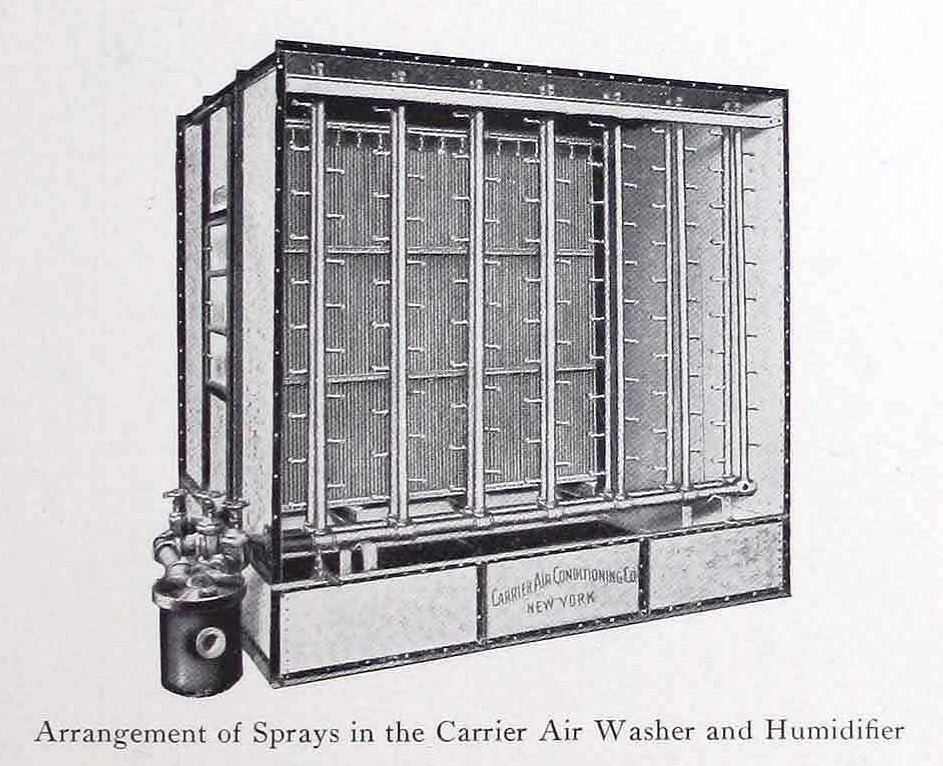Get Tech Tips
Subscribe to free tech tips.
What Willis Understood

I've been reading a book called Cool: How Air Conditioning Changed Everything, and it got me interested once again in the history of air conditioning and refrigeration. Like many things, the people who are credited with “inventing” are the ones dogged enough to make an idea commercially successful, not the idealists forever tucked away in the lab.
I bought a 1921 version of the periodical Ice and Refrigeration, and the advertisement shown above was mixed in with the ads for absorption ice machines and “mineral wool” insulation. Willis Carrier understood how to connect ideas and make sense of emerging technology, first to keep paper dry in a factory and later to cool the world with “Manufactured Weather.” Look carefully at the ad. You will notice that it mentions many things—but not cooling; the ad is in ICE AND REFRIGERATION, but it doesn't mention COOLING.
Many of you know that in 1906, Willis Carrier patented what is now referred to as the “First Air Conditioning System,” but do you know what it was that he actually invented?
You may be led to believe that Willis Carrier invented compression refrigeration. Nope, the first commercial attempts at compression refrigeration began in the 1830s, and the patent above actually has no compression refrigeration in it whatsoever. Many will say that he was the first to dehumidify the air; this is also false, as there had been compression refrigerated cooling coils in use that dehumidified the air before Willis came along. They just didn't do it on purpose.
What Willis Carrier understood better than anyone else in his day was the RELATIONSHIP between humidity, temperature, and saturated air or “dew point” and how to manipulate water temperature, water volume, and air volume to produce a CONTROLLED humidity environment first and later a controlled temperature, humidity, and ventilation environment.

The Carrier “Air Washer” was nothing more than water pumped through nozzles that produced a water mist. The air would blow through the water mist, and it would clean the air, drop it to dew point (100% RH), and then continue to cool the air sensibly. Willis worked in northern states with cold groundwater during a time before water use restrictions. So, the cold water would cool AND dehumidify the air. At the time, it seemed like black magic that running air over water could REMOVE water from the air, but so long as the water temperature was below the dew point temperature of the air, that is exactly what would happen. All Willis had to do to change the dehumidifier to a humidifier was increase the water temperature. To change the dehumidifier to a sensible cooling machine, all he had to do was use cold water and give the air more dwell time or pass through the water to decrease the sensible temperature.

In the process, Carrier and his team made many discoveries about air, and in 1911, Carrier presented possibly his greatest work, which he called the “psychrometric formulae.” That piece is the founding document on which all of the current understanding of psychrometrics is built. Carrier took a VERY SIMPLE idea, pursued it, and understood it better than the others around him, and because of that, we remember him today. He thought about cooling, heating, ventilation, humidity, and air cleanliness and combined them into one machine that controlled it all.
Later on, Carrier would begin actively “cooling” the air with compression refrigeration. He replaced water sprays with refrigerant evaporator coils to leverage the latent capacity of refrigerants. Nevertheless, it all started with a mist of water, an understanding of dewpoint, some dogged determination, and some clever marketing for his “manufactured weather.”
—Bryan
To find the catalog where I found some of this information, you can search the national archives right HERE.
For those of you interested in history, HERE is a more comprehensive history of refrigeration.













Comments
To leave a comment, you need to log in.
Log In